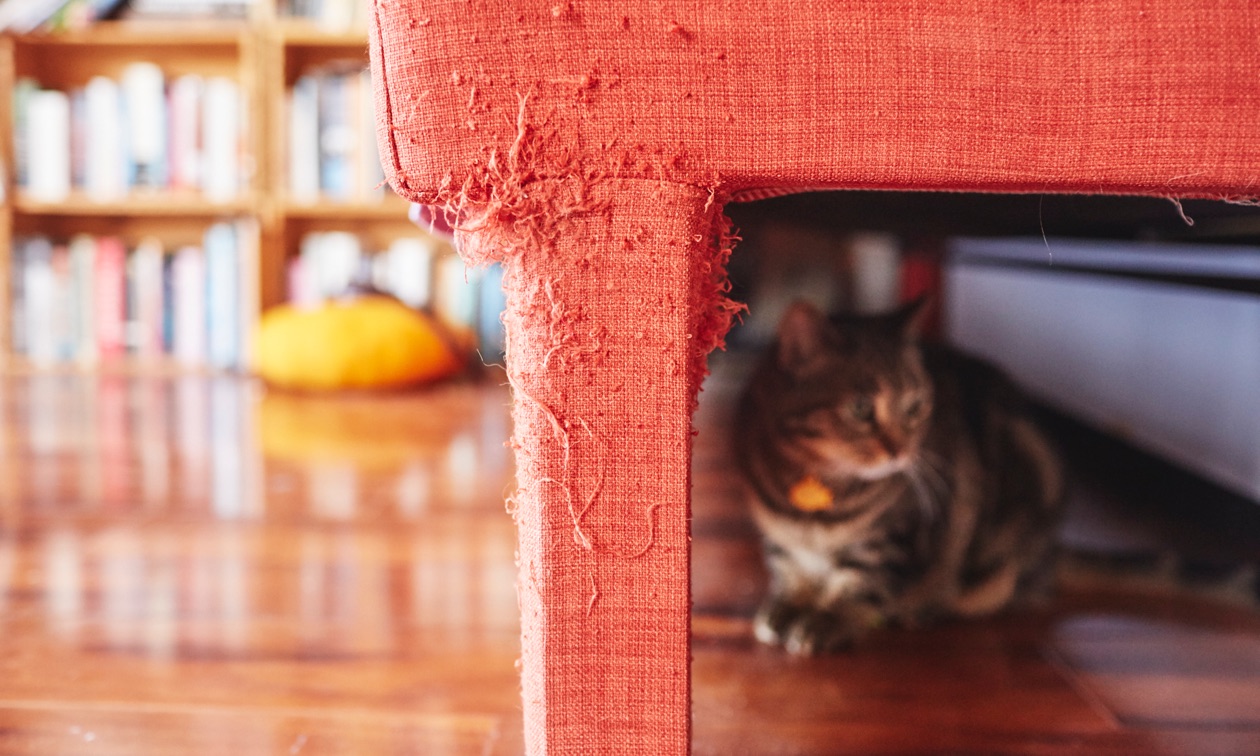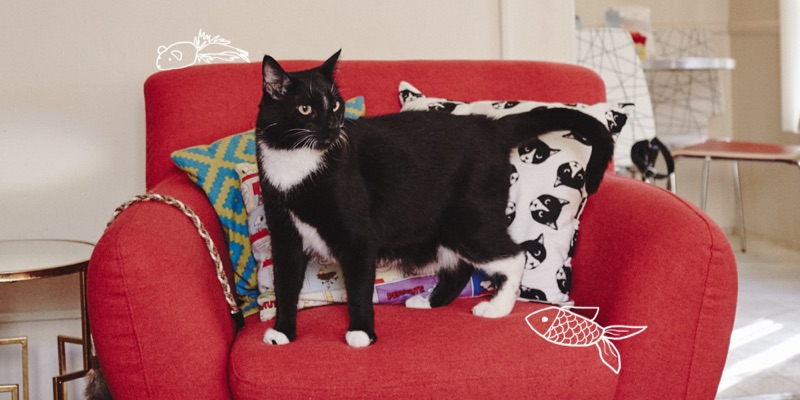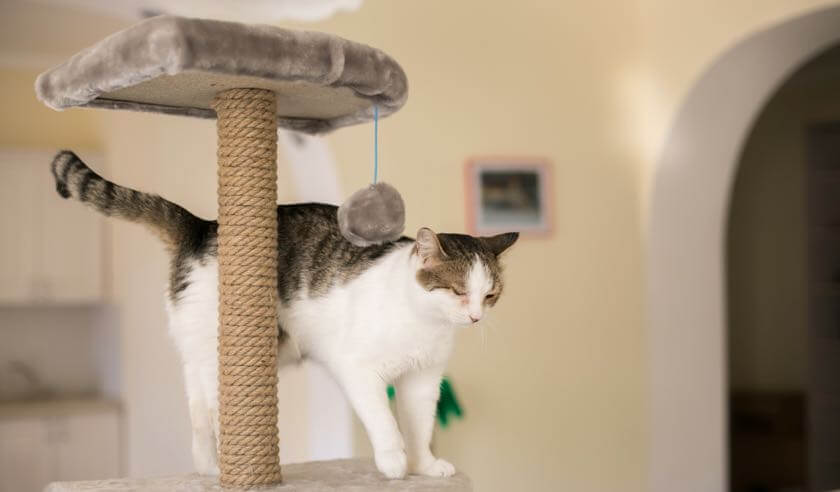It’s quiet in your home — too quiet. You hear a horrific tearing sound, then a flash of lightning reveals a fluffy assailant and a fresh gash in your couch. Scratching does keep your cat’s nails healthy and helps them communicate. But you can give them a better place to get self-expressive than your brand-new couch.

How to Keep Your Cats from Scratching Your Furniture
Cats' natural inclination to scratch your furniture serves several purposes. Whether they want to mark their scent, trim their nails, or get a good stretch, scratching is an instinctive behavior. Rather than trying to eliminate it altogether, you can redirect their scratching to acceptable items and even train cats not to scratch furniture. Try a few of these different methods to see which works best for your cat.
Introduce Plenty of Scratch-Friendly Furniture
Instead of covering up all surfaces in your home in hopes that they’ll be ignored, introduce healthy scratching magnets throughout. Scratching posts, cat condos, and cat trees are all great options (make sure to use both vertical and horizontal surfaces). You may need to test out a few different types, sizes, and materials to see what your cat prefers best. Introduce a few different “scratch magnets” in the areas they commonly scratch.
Use Positive Reinforcement
If you want to train cats not to scratch furniture, positive reinforcement can help. Clicker train them to the appropriate surfaces, like the new scratching post. Use catnip or pheromones on the surfaces you actually want them to scratch to further encourage them.
Make It Fun
Make all interactions with appropriate scratching surfaces fun and exciting. You can do this by using a wand toy, laser pointer, or whatever seems to catch your cat’s attention. Once you get your cat to engage with the surface, their scent will be imprinted on it.
Keep Their Claws Trimmed, Covered, and Tidy
If your cat still seems to be scratching areas they shouldn’t be, consider other (humane) solutions.
- Trim their nails regularly.
- Use cat nail covers on their paws to protect the furniture.
- Apply specially designed sticky tapes, aluminum foil, and other materials your cat doesn’t want to touch or hear.
- Thoroughly clean any undesirable surfaces they’ve been scratching with an enzymatic cleaner and odor remover.
ZPC-00182R2





